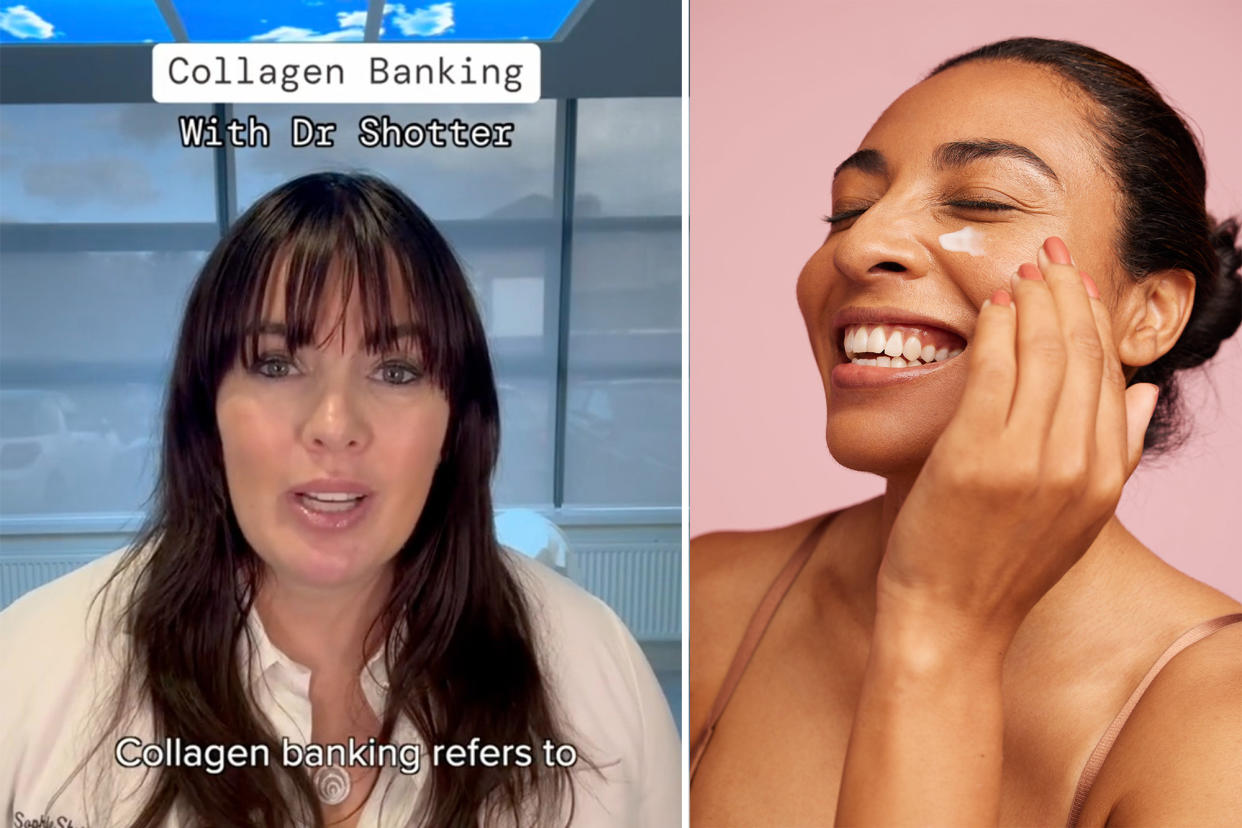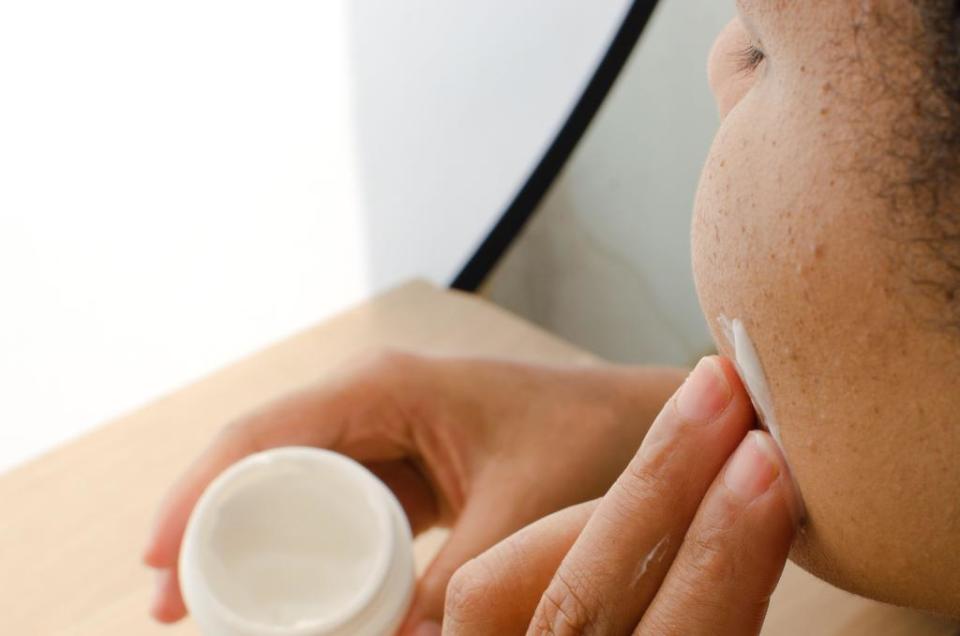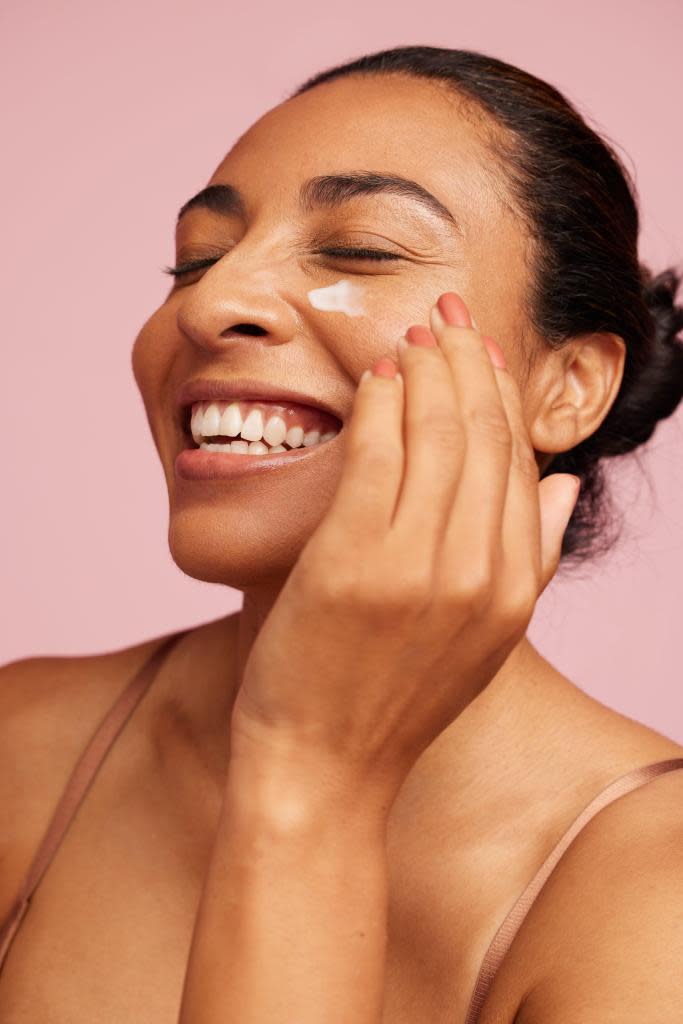What’s ‘collagen banking’? How to get — and keep — youthful-looking skin

Is it time to invest in your skincare now, for the future?
“Collagen banking” is a term that’s growing in popularity, with some dermatologists encouraging their patients to make it their 2024 goal.
“‘Collagen banking’ refers to building up your collagen levels while you’re younger and your body’s still making it so that when they do start to decline, you’re starting from a better position,” Dr. Sophie Shotter, of Absolute Collagen, explained in a TikTok last month.
Collagen, which is found in connective tissue, tendons, bones, muscles, and cartilage, gives skin its elasticity. It’s the most abundant protein in the body and has been called the glue that holds it together.
Collagen production decreases as you age, by as much as 2% a year, and by 30% in the first five years of menopause, experts told the Sunday Times last month.
Dr. Miriam Adebibe, an aesthetic doctor and holistic skin specialist, told PopSugar UK that “collagen banking” could be considered a skin investment plan.
“I like to use the analogy of a bank account with my patients when it comes to collagen,” Adebibe said this week. “You want to have enough in the bank to cover any losses. If you’ve been working on collagen stimulation pre-menopause, then you’re likely to have more available in the bank to lose.”
“Collagen banking” wasn’t coined recently — it’s a buzzy term that’s been around since at least 2019, with some dermatologists recommending getting collagen-stimulating treatments in your 20s.
“It is well studied that the body starts losing more collagen during the late 20s,” Annie Chiu, a cosmetic and general dermatologist, told HuffPost at the time. “This is when enzymes that break down collagen start increasing in activity beyond what the body naturally replenishes — essentially collagen breakdown outpaces new collagen production. And if you start replenishing early, you can better keep up with the rate of loss.”

Experts say there are treatments you can undergo and dietary changes you can make to preserve collagen levels.
Approaches “include wearing sunscreen every day, keeping skin hydrated, [and] the use of antioxidants, topical retinoids and actives that can promote and protect collagen production,” Angela Taylor, a skincare expert at Dermalogica, recently told Stylist UK.
A Kentucky-based board-certified dermatologist advises banking collagen with chemical peels; microneedling, which is puncturing the skin with tiny sterilized needles, with or without radiofrequency waves; topical retinoids,which are derived from vitamin A; LED light therapy; and injectable dermal fillers like Radiesse and Sculptra.

Tina Fey’s makeup artist and others, meanwhile, rave about Dermalogica’s Pro-Collagen Banking Serum ($89), which claims to plump and hydrate skin while preserving collagen.
But the key to pre-juvenation may be in your kitchen, not your bathroom.
“Collagen banking can be done through a healthy diet, by eating foods rich in vitamin C and amino acids such as citrus fruits, berries, fish and leafy greens,” Dr. Dave Reilly, head scientist at Absolute Collagen, told PopSugar UK. Reilly also recommends Absolute Collagen’s liquid collagen supplement ($35).
The collagen supplement global market was valued at $1.99 billion in 2021, even as some medical experts have raised red flags about their effectiveness.

And not everyone has bought into “collagen banking.”
“The chronological aging process will continue,” London-based dermatologist Dr. Anjali Mahto told the Sunday Times. “There are specific skincare ingredients and treatments that boost native collagen production — just don’t be fooled into thinking you can cheat your way back to prepubescent skin.”

